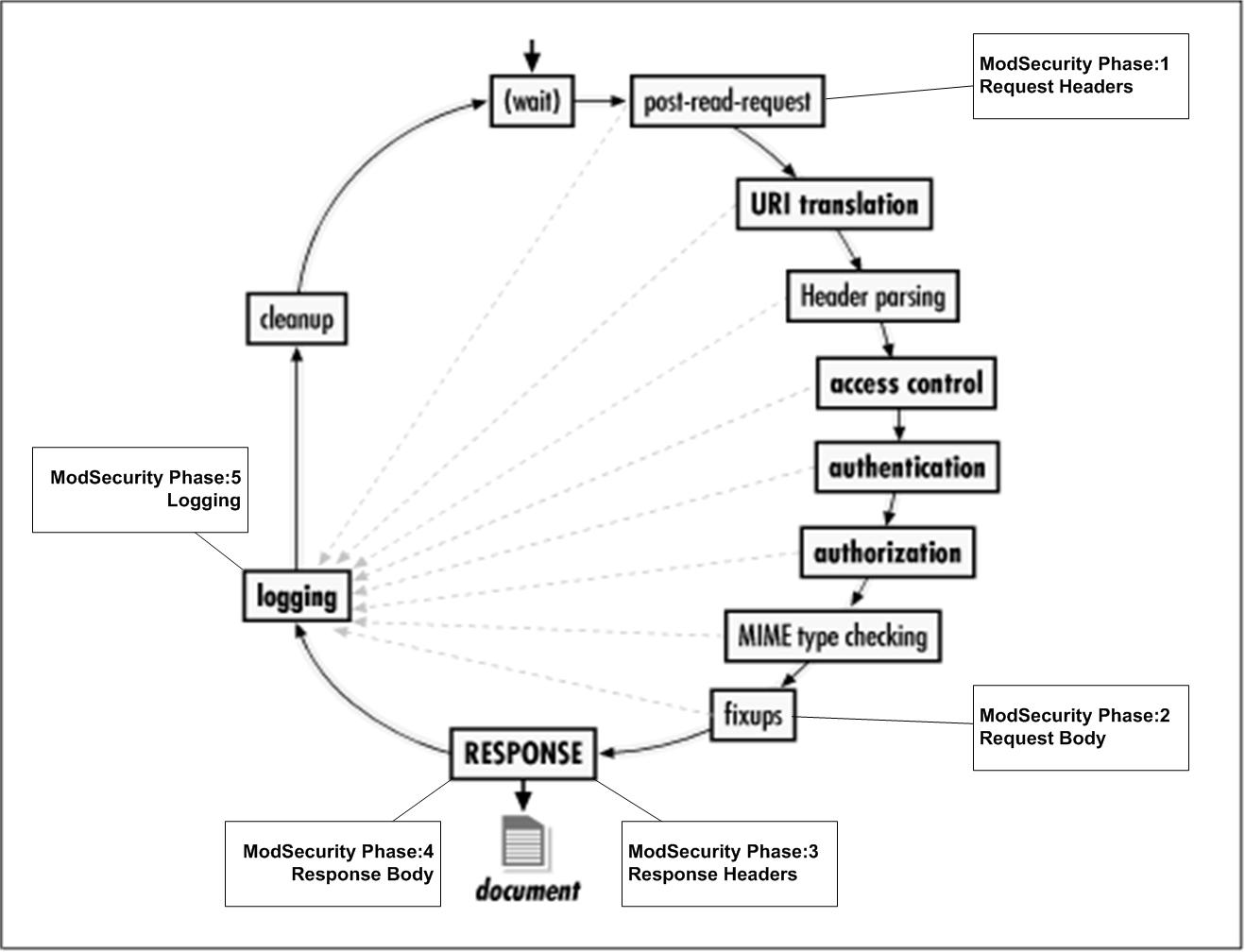ModSecurity 2.x allows rules to be placed in one of the following five phases:
Request headers
Request body
Response headers
Response body
Logging
ModSecurity Processing Phases Diagram
Below is a diagram of the standard Apache Request Cycle. In the diagram, the 5 ModSecurity processing phases are shown.

In order to select the phase a rule executes during, use the phase
action either directly in the rule or in using the
SecDefaultAction directive:
SecDefaultAction "log,pass,phase:2" SecRule REQUEST_HEADERS:Host "!^$" "deny,phase:1"
Note on Rule and Phases
Keep in mind that rules are executed according to phases, so even if
two rules are adjacent in a configuration file, but are set to execute in
different phases, they would not happen one after the other. The order of
rules in the configuration file is important only within the rules of each
phase. This is especially important when using the skip
action.
Rules in this phase are processed immediately after Apache completes reading the request headers (post-read-request phase). At this point the request body has not been read yet, meaning not all request arguments are available. Rules should be placed in this phase if you need to have them run early (before Apache does something with the request), to do something before the request body has been read, determine whether or not the request body should be buffered, or decide how you want the request body to be processed (e.g. whether to parse it as XML or not).
Note
Rules in this phase can not leverage Apache scope directives (Directory, Location, LocationMatch, etc...) as the post-read-request hook does not have this information yet. The exception here is the VirtualHost directive. If you want to use ModSecurity rules inside Apache locations, then they should run in Phase 2. Refer to the Apache Request Cycle/ModSecurity Processing Phases diagram.
This is the general-purpose input analysis phase. Most of the application-oriented rules should go here. In this phase you are guaranteed to have received the request argument (provided the request body has been read). ModSecurity supports three encoding types for the request body phase:
application/x-www-form-urlencoded - used to
transfer form data
multipart/form-data - used for file
transfers
text/xml - used for passing XML data
Other encodings are not used by most web applications.
This phase takes place just before response headers are sent back to the client. Run here if you want to observe the response before that happens, and if you want to use the response headers to determine if you want to buffer the response body. Note that some response status codes (such as 404) are handled earlier in the request cycle by Apache and my not be able to be triggered as expected. Additionally, there are some response headers that are added by Apache at a later hook (such as Date, Server and Connection) that we would not be able to trigger on or sanitize. This should work appropirately in a proxy setup or within phase:5 (logging).
This is the general-purpose output analysis phase. At this point you can run rules against the response body (provided it was buffered, of course). This is the phase where you would want to inspect the outbound html for information discloure, error messages or failed authentication text.
This phase is run just before logging takes place. The rules placed into this phase can only affect how the logging is performed. This phase can be used to inspect the error messages logged by Apache. You can not deny/block connections in this phase as it is too late. This phase also allows for inspection of other response headers that weren't available during phase:3 or phase:4.